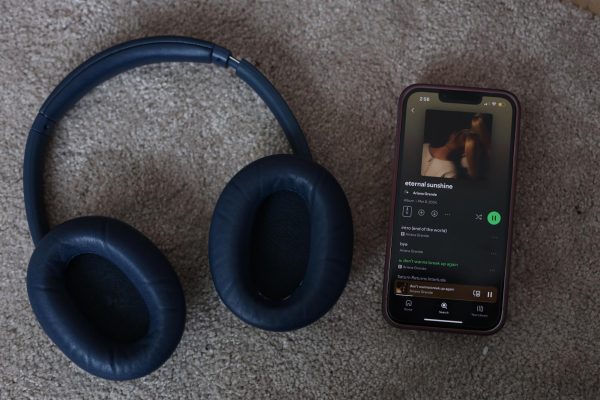Gracie Abrams Asks Us All “Where Do We Go Now?”
Gracie Abrams announced that her debut album, titled “Good Riddance,” will be released on Feb. 24, with an accompanying tour of the same name. Following this announcement, she released a single and music video on Jan. 13, both titled “Where Do We Go Now?”
The beginning of the music video is shot in black and white and shows Abrams facing away from the audience. The opening notes are reminiscent of the intro to her song, “Difficult,” released in October 2022. The first words paint a picture of someone who knows that a relationship is failing and feels that something is wrong to the point where resolution is not possible, but instead of facing this painful reality, they choose to ignore their own feelings and feign love.
Once the chorus begins, the video switches to color, and Abrams is shown sitting on the floor in a disgruntled position. The only two objects in the room are a potted plant and a single high heel. Her frustration and desperation in response to her failing relationship become evident during the chorus due to the drastic switch in her appearance to a less put-together version of herself, as well as her repetition of the words “Where do we go now?” The switch from black and white to color throughout the video shows her cycling emotions as the relationship has its ups and downs and approaches an end.
In the second verse, she comes across as frustrated with her partner for failing to realize that their relationship cannot go any further, and yet she’s not willing to discuss how she feels. She says that the way the relationship is ending is a brutal way to die and that her partner chooses it every time. Through her word choice, she appears to blame her partner for the course and ultimate end of the relationship. The video concludes with an amalgamation of Abrams in different situations, with the final frame showing her staring directly at the camera with a discouraged look on her face.
Although this song is consistent with the tone and feel of her other songs and mirrors her previous single in many ways, I believe this is a stylistic choice rather than a lack of creativity. In “Difficult,” she tackles growing up, and in this single, she tackles relationships, with the underlying theme of both being uncertainty. The bridge to this song is what really stands out to me. She switches to a hopeful tone and suggests that maybe they can one day reunite after maturing once they can put effort into the relationship and commit fully to making it work. She recognizes that her partner is upset with her and has a right to fight with her because she’s so caught up in her writing that she feels as though she lives in it and that if the roles were reversed, she would react the same way.
This single may not be groundbreaking in any way, but it’s not meant to be. The area in which Abrams shines is in her writing, and her ability to convey deep emotions that many singers would rather not put into words in an extremely sophisticated way for someone of her age. Her lyrics and melancholic tone are not for the faint of heart. She can appeal to a young audience that likely experiences similar heartbreak and emotions, and she can consistently evoke those feelings in a different way with each song. I often listen to her music when I’ve gone through a particularly bad day and need reassurance that I’m not alone in my feelings, as I’m sure many readers do as well.
It’s comforting to know that even celebrities can struggle with something as common as growing up and experiencing rough patches in relationships and loss of love. Although we may be different people from varying backgrounds, we experience the same depth and intensity of our emotions. She recognizes that and encourages listeners to feel their emotions rather than pushing them down and bottling them up or ignoring them because she wants to reverse the idea that society has instilled in us that it’s bad to feel them too deeply.











































































































































































































